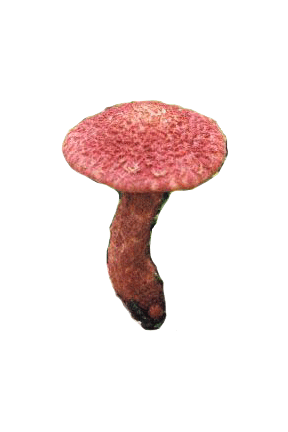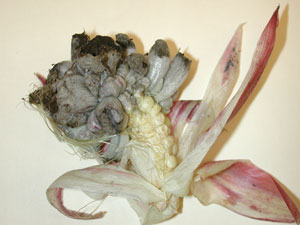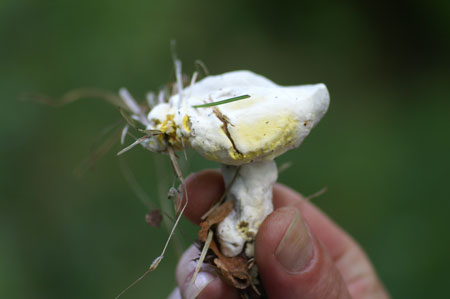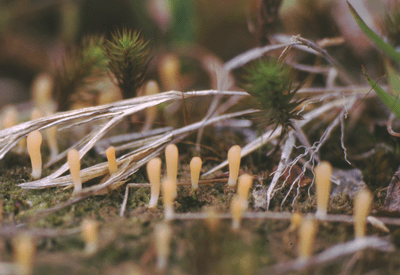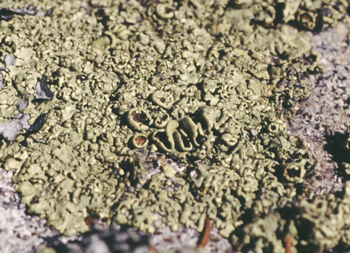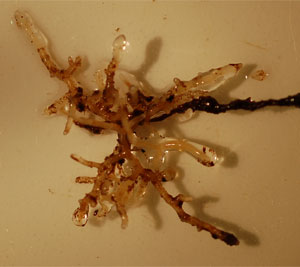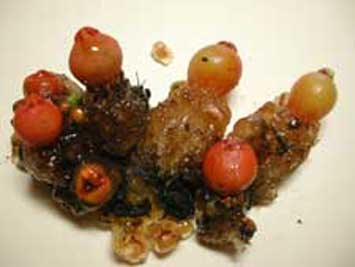Fungal Symbiosis Lesson
Symbiotic fungi.
Symbioses are intimate associations involving two or more species. Fungi have evolved numerous symbioses involving diverse eukaryotes and prokaryotes. Traditionally, symbioses are categorized according to the relative benefit or harm that the partners experience (properly conceived in terms of fitnessreproductive success) as a consequence of the interactions. In parasitism one partner benefits from the association, but the other partner is harmed. In mutualisms both symbionts benefit from the interaction. In commensalism, one partner benefits, but there is no (perceived) effect on the other partner.
The evolution of reciprocal parasitism.
The categories given above are useful for conceptualizing the diversity of symbioses, but they oversimplify the nature of the interactions, especially mutualisms. It is now appreciated that even in the most benign associations there is a basic conflict of interest among the partners, both of which are trying to maximize their reproductive output at the expense of the other partner. Thus, many ecologists and evolutionary biologists now regard mutualisms and other symbioses as reciprocal parasitism. That being said, the following discussion provides examples of selected fungal symbioses, divided into the traditional (if flawed) categories of parasitism, mutualism, and commensalism.
Parasitism
Here are some examples of fungi that act as parasites or pathogens:
Animal pathogens
Batrachochytrium dendrobatidis (chytridiomycete) causes amphibian chytridiomycosis—a recently discovered disease that is implicated in the worldwide decline of amphibians. The emergence of this outbreak may be linked to Global Warming. Cordyceps sp. (ascomycete) is an insect pathogen that consumes insects from the inside and and fruits from the mummified body.
Cordyceps sp. fruiting from an insect pupa
Plant pathogens
This may be the best studied ecological group of fungi because of the agricultural significance. Among the less devastating crop plant pathogens is Ustilago maydis, a basidiomycete which is eaten as a delicasy in latin america.
An ear of corn is infected with Ustilago maydis, the corn smut.
Fungal parasites
Asterophora parasitica (basidiomycete) is a mushroom that grows on mushrooms. Hypomyces lactifluorum (ascomycete) is a parasite of fleshy mushrooms (basidiomycetes). The parasitized mushrooms are edible and are sold as “lobster mushrooms”.
Asterophora parasitica (left, click for an artistic rendering) attacking a Russula mushroom and (undergoing ID) (right) attacking a bolete mushroom.
Mutualism
Many fungal mutualisms are driven by the ability of the fungus to decompose organic substrates that are inaccessible to its host. Again, it is often not clear to what extent the two partners benefit (experience enhanced fitness), which calls into question the classification of these interactions as mutualisms.
Lichens are symbioses involving fungi and unicellular algae
The fungi are mostly ascomycetes, but there are also a few basidiolichens. The algae are mostly eukaryotic green algae, but there are also some cyanobacterial symbionts. The fungi obtain carbohydrates from the algae, which are photosynthetic and contribute the green color to the lichen thallus. Many lichens are sensitive to air pollution and are indicators of air quality.
Multiclavula mucida, a lichenized basidiomycete (left) and Parmelia sp., a lichenized ascomycete (right)
Mycorrhizae are symbioses involving fungi and the roots of plants
In these associations, the fungi derive photosynthetic sugars from the plants, and they assist the plant by facilitating the uptake of mineral nutrients and water. Approximately 70-80% of all plants have mycorrhizae. Mycorrhizae have evolved repeatedly in different groups of fungi. There are two major forms of mycorrhizae:
- Ectomycorrhizae are formed primarily by basidiomycetes (about 5000 species), and also a few ascomycetes. A sheath of hyphae called a mantle envelops the plant root and hyphae penetrate into the cortex. These symbioses involve mostly forest trees, including oaks, birches, willows, pines, dipterocarps, and eucalypts. Many choice edible fungi are ectomycorrhizal.
Gelatinous ectomycorrhizae of Calostoma cinnabarinum (left) and the fruiting body (right). Photos courtesy of Andrew Wilson.
- Arbuscular mycorrhizae are formed by zygomycetes called Glomales (150 species). Although there are relatively few known species of Glomales, these symbioses are extremely widespread, involving roughly 70% of plants, including many herbaceous plants. Here the fungal hyphae penetrate into the cells of the root cortex, where they produce characteristic branched structures called arbuscules. Reproduction is by asexual spores that are produced underground—there are no aboveground structures or multicellular fruiting bodies, which makes Glomales very difficult to study.
Attine ants and cultivated fungi.
The attine “leaf-cutter” ants are major herbivores of the neotropics. These insects cut pieces of plant tissue which they carry to underground nests and feed to cultivated basidiomycetes. The ants then feed on the fungi. When winged female ants disperse to found new nests they carry the fungal inoculum with them.
Termites and Termitomyces (basidiomycete)
In Africa, termites in the subfamily Macrotermitinae cultivate basidiomycetes, much like attine ants. The termites consume plant material and deposit it as fecal material in the nest. Fungi in the next digest the plant tissue and the termites consume the fungi. Fungal cellulases remain active in the termite’s gut. As in attine ants, females that disperse to found new colonies bring fungal inoculum with them.
Bark beetles and woodwasps and their cultivated fungi
These distantly related insects share the habit of colonizing dead trees. In both cases, the fungi inoculate the chambers where the eggs are laid with wood-decaying fungi, including ascomycetes and basidiomycetes. Larvae feed on fungal hyphae.
Gut symbionts (Neocallimastix spp.; chytridiomycetes) are found in the stomachs of cows and other ruminant herbivores
Along with bacteria and other microorganisms, these anaerobic fungi help cows digest plant matter.
Commensalism
These are symbioses in which there is no obvious effect on the host. Some biologists reject the concept of commensalism, insisting that every interaction must have an effect on fitness, positive or negative, no matter how slight.
- Laboulbeniales (ascomycetes) are symbionts that occur on the exoskeleton of insects. 1869 species are known, despite the fact that they have been studied by only a handful of mycologists.

